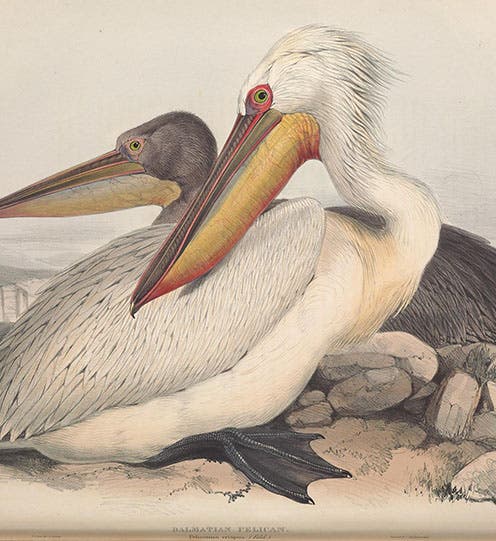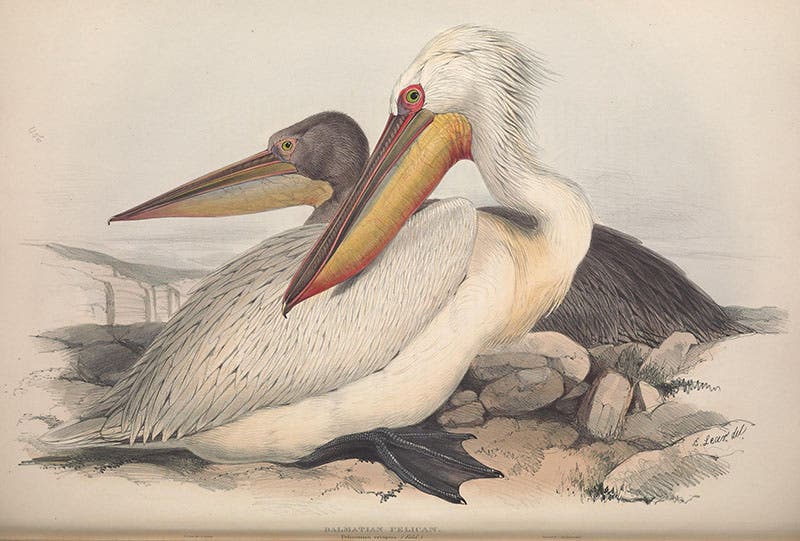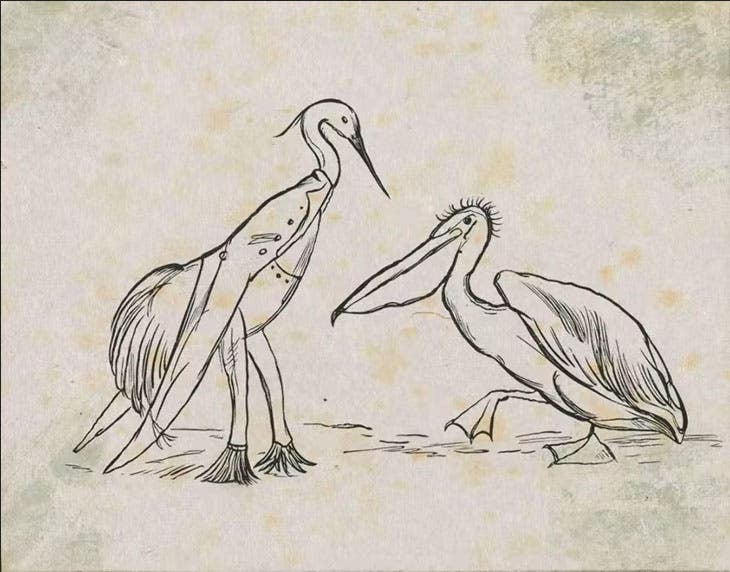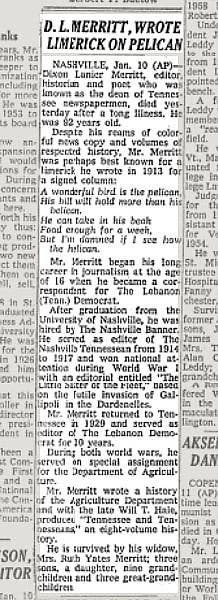Scientist of the Day - Dixon Lanier Merritt
Dixon Lanier Merritt, an American journalist, died Jan. 9, 1972, at age 92. Merritt spent his entire career in Tennessee, where he edited and contributed columns to the Nashville Tennessean and the Lebanon Democrat, wrote a regional history of his local county, and co-wrote a history of the state of Tennessee. He was also a birder, founding the Tennessee Ornithological Society, which may have been the inspiration for Merritt’s most memorable contribution to American culture, a single limerick, called “The Pelican.” Here it is, in its five-line entirety:
The Pelican by Dixon Lanier Merritt
A wonderful bird is the pelican
His bill will hold more than his belican
He can take in his beak
Enough food for a week
But I'm damned if I see how the helican!
This is one of the best-known of the non-naughty limericks and is often attributed to Ogden Nash or Edward Lear, but incorrectly so – it was written by Merritt around 1910. Merritt apparently wrote other limericks, but I have been unable to find any of them – he seems to have been a one-poem wonder. Since we like to have some images in these posts, we opened with a hand-colored lithograph of two Dalmatian pelicans, drawn by Edward Lear, and included in volume 5 of The Birds of Europe, by John and Elizabeth Gould (1837). We own this work, but it has not yet been digitized, so we show the plate from the Smithsonian Libraries, scanned for the Biodiversity Heritage Library. We did a post once on Lear’s bird art, which you can see here.
We chose this Lear pelican (Lear did two of them for Gould), rather than, say, an Audubon pelican, not only because the pelican limerick has often been attributed to Lear (Lear did write limericks), but also because Lear wrote a pelican poem of his own, famous in its own right, called "The Pelican Chorus". It is not a limerick but a nonsense poem, first printed (with Lear's own drawing of a pelican and a dandified king of the cranes) in Lear's Laughable Lyrics. A Fourth Book of Nonsense Poems, Songs, Botany Music, &c (1877). Here is the first verse and chorus.
The Pelican Chorus, by Edward Lear
King and Queen of the Pelicans we;
No other Birds so grand we see!
None but we have feet like fin
With lovely leathery throats and chins!
Ploffskin, Pluffskin, Pelican jee!
We think no Birds so happy as we!
Plumpskin, Ploshkin, Pelican jill!
We think so then, and we thought so still!
There are many more verses, which you can read at this link. Lear's original drawing for the printed poem (second image) is in the Houghton Library at Harvard. But now back to Merritt.
When Merritt died in 1972, the New York Times ran an obituary (Jan. 11, 1972; third image), for which they managed to squeeze "The Pelican" into the headline, spelled out in full, unlike Merritt's name, which had to be shortened, indicating that his pelican had overtaken his persona.
We have just one photo of Merritt, a very stiff one, but it is far better than nothing. He was buried in the town cemetery in Lebanon, Tennessee. Forty years after his death, in 2012, a memorial sculpture was erected in his honor at Cedars of Lebanon State Park, where the nature center was named in Merritt’s honor. Considering that “The Pelican” is much better known than Merritt, it seems appropriate that the sculpture portrays, not Merritt, but the bird (fifth image).
William B. Ashworth, Jr., Consultant for the History of Science, Linda Hall Library and Associate Professor emeritus, Department of History, University of Missouri-Kansas City. Comments or corrections are welcome; please direct to ashworthw@umkc.edu.











